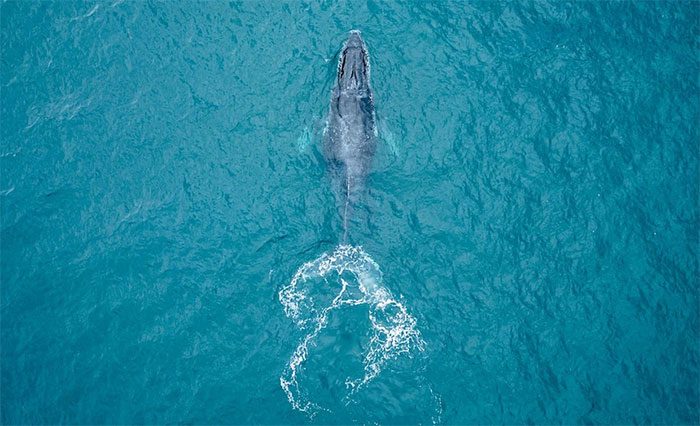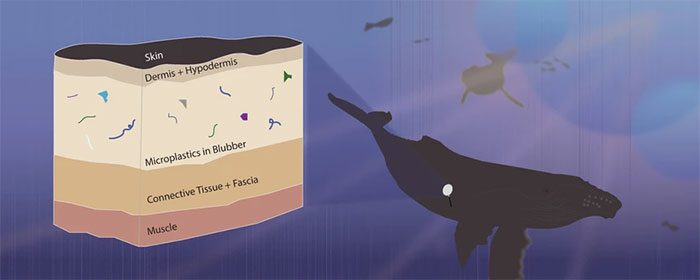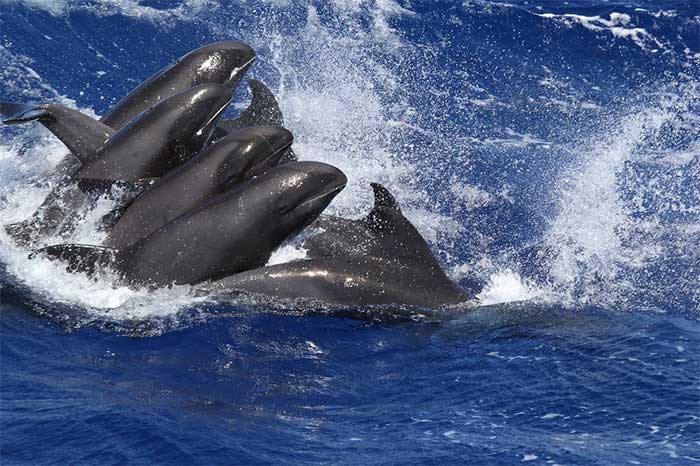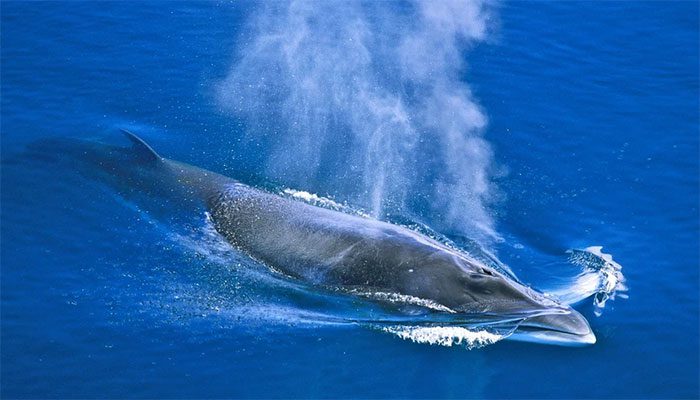Marine mammals – including species such as whales, dolphins, seals, sea lions, sea otters, manatees, and dugongs – are facing threats from various human activities. Species like the North Atlantic right whale, the Rice’s whale, and the Vaquita dolphin have been pushed to the brink of extinction.
Currently, plastic debris poses a particularly significant problem. Marine mammals often mistakenly ingest items like plastic bags, food wrappers, ropes, and discarded fishing gear, or they become entangled in plastic materials, including fishing nets. Both situations can lead to injuries and, in many cases, death.

Blue whales can consume up to 10 to 15 tons of food each day, making the amount of plastic they ingest relatively small in proportion. However, this still poses a significant danger and has negative impacts on their health.
A necropsy conducted on 34 stranded dolphins and whales along the coast of Greece in 2019 revealed that 9 of them (from four different species) had ingested plastic, and plastic consumption was identified as the cause of death in three of these animals.
Additionally, a recent study from the United States has revealed that marine mammals face a threat from even more refined plastic: microplastics.
In the ocean, microplastics (small plastic particles measuring less than 5 mm) often accumulate in the gills or digestive systems of animals. However, recent research has found microplastics in various tissues of several species of whales, dolphins, and seals.
This indicates that microplastics may somehow move from one part of the animal’s body to another. This discovery may have health implications not only for marine mammals but also for humans.

Among the studied whales was the blue whale, the largest animal on the planet, weighing up to 165 tons, measuring up to 33 meters in length, and living up to 90 years. According to preliminary estimates, this species may consume around 10 million microplastic particles (over 43 kg) each day, or possibly even more.
Polluted Tissues
Researchers sampled tissues from 32 individual animals belonging to 12 species of marine mammals. These animals were stranded or collected from 2000 to 2021.
The samples were taken from blubber, melon (fatty structure found on the forehead of whales), acoustic fat pads (from the jaw), and lung tissue of the animals. All serve important functions, such as helping marine mammals breathe, hear, locate prey, and stay warm.
Analysis of the samples showed that each melon, acoustic fat pad, and lung tissue contained microplastic particles. The particles in the tissue samples ranged from very small (24µm) to relatively large (1.387µm).

This issue is not only a threat to whales but also poses a risk to all other animals that may ingest plastic.
Small Particles, Big Impact
The study has provided insights into how microplastics can affect marine species. At the Plymouth Marine Laboratory, scientists have demonstrated that exposure to microplastic particles can impact feeding, growth, and reproduction in filter-feeding marine animals or those that consume sediments.
Evidence of the impact of microplastics on larger animals is very limited. This is because our understanding largely stems from observing dead animals.
However, studies have indicated that microplastic fragments can cause scar tissue formation in the stomachs of seabirds. There are also concerns that chemicals found in marine plastic waste may leach into the tissues of marine mammals when ingested.

Currently, most studies on the effects of microplastics on the human body have been conducted in laboratory settings.
At present, the risk of ingesting microplastics from seafood meals is lower than drinking bottled water. However, the prevalence of microplastics in the marine environment is rapidly increasing and it is becoming clear that these particles can also enter the bloodstream of both animals and humans. Research has found microplastics in human blood samples and in human placentas.
Laboratory studies have attempted to highlight the negative impacts of microplastic exposure on small fish and invertebrates. However, we still do not fully understand the consequences of ingesting microplastics for larger mammals like whales, dolphins, and humans.
What scientists are certain of at this point is that the density of microplastics in the marine environment is steadily increasing – our oceans currently contain over 170 trillion plastic particles. Efforts to prevent plastic from entering the marine environment are urgently needed.
This research was published in The Conversation by Samantha Garrard at the Plymouth Laboratory.


















































